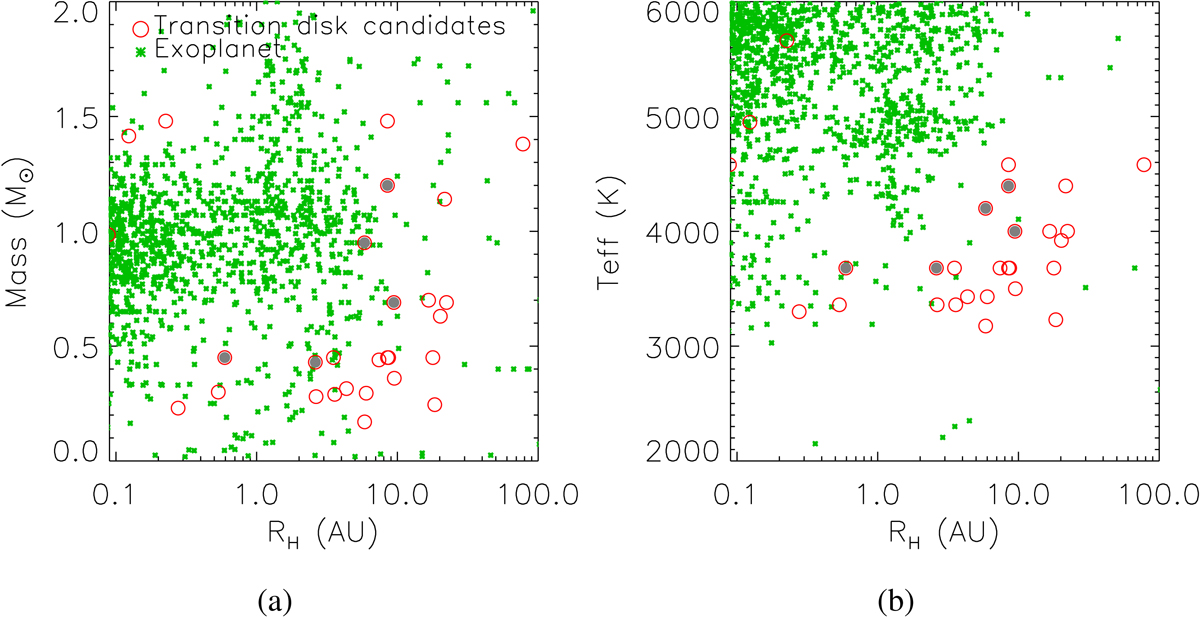Fig. 16.

Mass and temperature of the central star obtained by Venuti et al. (2014) as a function of disk hole size. The overplotted data from the literature correspond to exoplanets with confirmed detection and the vertical axis is plotted as a function of the semimajor axis of the exoplanet orbit. Despite the fact that the masses and temperatures of our stars are slightly lower than the exoplanet host stars, the hole sizes of our transition disks and the semimajor axis of the exoplanet orbits are compatible. The data of the exoplanets and the host star were taken from http://exoplanet.eu. Gray filled symbols identify systems that fall in the region where the inner disk hole can be explained by X-ray photoevaporation. Our data do not show a clear linear tendency between the mass and the temperature of central star with the inner hole size, as seen in literature.
Current usage metrics show cumulative count of Article Views (full-text article views including HTML views, PDF and ePub downloads, according to the available data) and Abstracts Views on Vision4Press platform.
Data correspond to usage on the plateform after 2015. The current usage metrics is available 48-96 hours after online publication and is updated daily on week days.
Initial download of the metrics may take a while.


